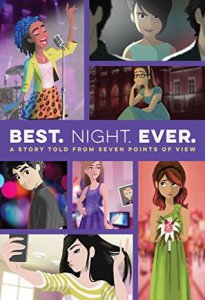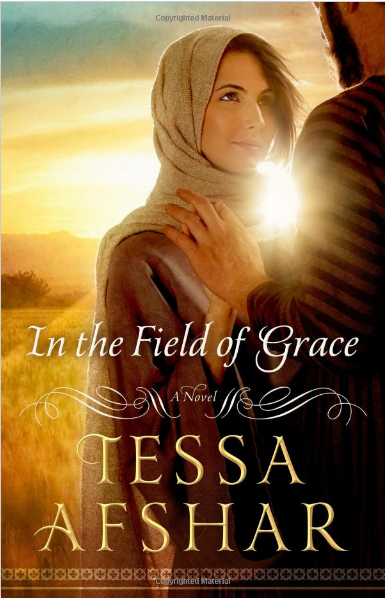“Even if it doesn’t make it into your story, write different conversations and be willing to explore the fluidity of your characters as they move through the world and communicate.”
-Natalia Sylvester
Natalia Sylvester is teaching a class for the Writers’ League of Texas called “Talk to Me: Writing Dialogue that Rings True & Speaks Volumes” on April 22 at St. Edward’s University in Austin, TX. The class will provide writers with tips and strategies to tackle all the different aspects of dialogue to help bring their characters and stories to life. Read the interview below and visit the class page to learn more.
 Scribe: Using different languages or specific jargon can play a huge role in creating the world of a novel; however, it can also slow the reader down. What do you think about using these different elements, and are there any guidelines you suggest for when to hold back?
Scribe: Using different languages or specific jargon can play a huge role in creating the world of a novel; however, it can also slow the reader down. What do you think about using these different elements, and are there any guidelines you suggest for when to hold back?
Natalia Sylvester: This is a fascinating question to me. To think about “slowing the reader down” means there’s an assumption of a very specific reader who won’t understand or appreciate the presence of different languages or jargon, and we too often center this as our only reader. But language and jargon are windows to the world of our characters; it’s part of their culture, whether we’re talking about a character who immigrated from another country or a character who’s spent their whole career in the corporate culture.
It’s interesting to me that this conversation often takes the approach of “when should we hold back,” as if we should be afraid of making readers who are unfamiliar with these cultures uncomfortable. I’m far more motivated by the idea of making readers who will recognize themselves in these cultures feel understood, and helping those who are unfamiliar with them learn and grow by seeing the world through perspectives new to them. So my advice to writers would be to create their world truthfully and fearlessly.
Scribe: Many stories have large casts of characters. Any tips for helping writers generate distinct voices for each of their characters?
NS: How we speak is so heavily influenced by who we are, so generating distinct voices is truly an exercise in character development. For example, someone who grew up in Miami (like me) is going to have different word choices, idioms, and expressions than someone who grew up in Minneapolis. The same goes for people who have different racial, ethnic, and socioeconomic backgrounds. That’s just one layer of it, of course, because characters who share all these things won’t (and shouldn’t) sound the same.
Think about who your characters are below the surface of this information. What are their passions and obsessions? How do they see themselves and their place in the world? A character who’s a pessimist will have a completely different way of speaking than one who’s an optimist. A character who grew up obsessed with solving riddles and puzzles will likely speak very differently than one who spent their whole childhood winning little league games. And then, once you’ve delved deep into what shaped each character into who they are, explore all the ways this changes.
The truth is, not only do people have voices different from others, they also have different voices depending on who they’re speaking to and what their intentions are. Do you speak differently to your mother than you do your boss? Even if it doesn’t make it into your story, write these different conversations and be willing to explore the fluidity of your characters as they move through the world and communicate.
Scribe: What is one common mistake you see writers make when developing dialogue that you would like to warn against?
NS: There’s a road in Austin called “Exposition Blvd” and I chuckle to myself every time I find myself driving past it because I’d love to warn writers to stay far away from loading their dialogue with exposition. Particularly when characters begin sharing information with each other that they already know, but that we as readers don’t. The best way I can describe it is it’s like watching an infomercial; you know those prescription drug commercials where two actors are having lunch and just casually speaking about the benefits and side effects of a specific drug? We all know that no one really speaks like that, so we don’t really buy into it. This kind of dialogue makes us lose trust in the storytelling and in the voices of the characters themselves.
Scribe: Are there any exercises you can recommend for writers to do to help them fine-tune the dialogue in their stories?
NS: Listen, listen, listen. Listen to how people you know talks. Listen to how strangers at coffee shops and hospitals and grocery stores and the DMV talk. Listen to how people who grew up the youngest of six children talk. Listen to how authority figures talk and how people of different ages talk. And then write how each of those people (or each of your characters) would tell a loved one at the end of the day the exact same thing — say, if they got into a car accident on the way home from work. No two conversations and reactions would be the same.
Scribe: In the class description, you mention the class will be looking at examples of well-written dialogue. Any specific authors you’d like to recommend writers towards, for guidance with dialogue writing?
NS: One of my favorite scenes of dialogue is the opening pages of Mira Jacob’s The Sleepwalker’s Guide to Dancing. It is simply a phone call between mother and daughter, but it is so incredibly rich in information about the characters, the setting, the conflict, that it sets up the entire story brilliantly. I can’t wait to dissect this scene with the class and use it as a springboard for a writing prompt!
—
Thanks, Natalia!
Click here to register for Natalia’s class.
Click here for our current class schedule.
About the Instructor
Natalia Sylvester is the author of the novel Chasing the Sun and the forthcoming Everyone Knows You Go Home. She is a faculty member of the low-res MFA program at Regis University. Her work has appeared in Latina magazine, Writer’s Digest, and NBCLatino.com. Her Twitter and Instagram handle is @NataliaSylv.
Advertisements Share this post!- More





